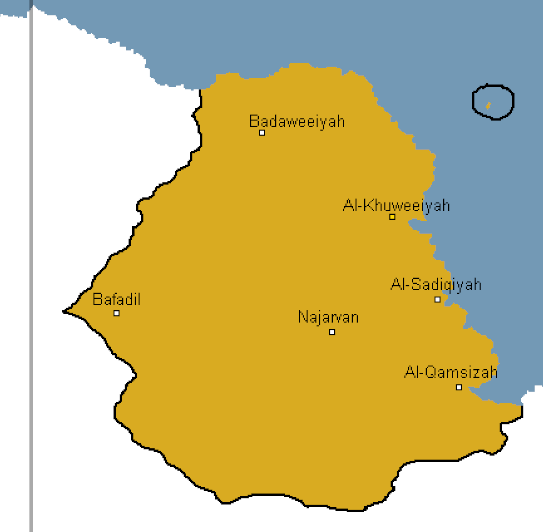Flag:
Nation Name (long): The Wahdist Republic of Dabiristan
Nation Name (short): Dabiristan
Motto: We trust in Wahd and fear nothing other than Wahd.
National Animal: Dabiristani Eagle (Fictional)
National Flower/Plant: Red Rose
National Anthem: (WIP)
Capitol: Al-Khuweeiyah
Largest City: Al-Sadiqiyah
Demonym: Dabiristan
Language: Dabiristani
Species: Human
Population: 72.4 million pop (2020 census)
Government type: Unitary Theocratic Presidential Wahdist Republic
Leader(s): Supreme Leader Mahmoud Tabatabaei
Legislature:
Upper House - The Wahdist Senate of Dabiristan
Lower House - The Wahdist Consultative Assembly of Dabiristan
Formation: 1984
Total GDP: 721.2 Billion USD
GDP per capita: 9961.33 USD
Currency: Akhar
Calling Code: 313
ISO 3166 code: DB and DBS
Internet TLD: .db
Historical Summary:
Dabiristan was originally settled by a multitude of tribes all closely connected to each other. Over centuries, the tribes would form multiple settlements along rivers and resource rich regions and eventually would form their own civilisation.
This civilisation would form multiple empires throughout the course of its ancient history. In 610 AD, the Prophet Ahmad began preaching his religion known as Wahdism. Most historians conclude that Dabiristan would fully convert to this religion in 629 AD, following the death of Iimbraturia Borgoz and his empire’s dissolution. Prophet Ahmad would fill the power vacuum that had formed until his death in 634 AD.
The Wahdist Revolution of 1984 would result in the downfall of the Sadeghid Dynasty and thus bring an end to the monarchic system Dabiristan had adopted since its formation. The revolution would result in Ayatollah Youssef Azageh assuming power as Dabiristan’s first “Supreme Leader”. Azageh would draft a new constitution, one which would be based on Wahdism.
Following the fall of the Sadeghid’s, the economy would spiral downwards due to withdrawals of foreign investments and closures of private industries within Dabiristan. The economy managed to make a full recovery in 2002 and has been steadily growing since.
Map:
Gondwana - Near Sayyed

